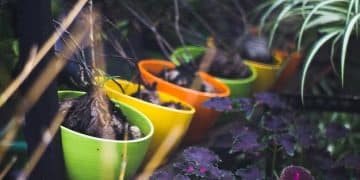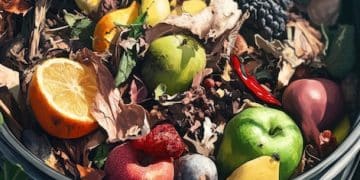Sustainable Gardening: Grow Food, Conserve Resources
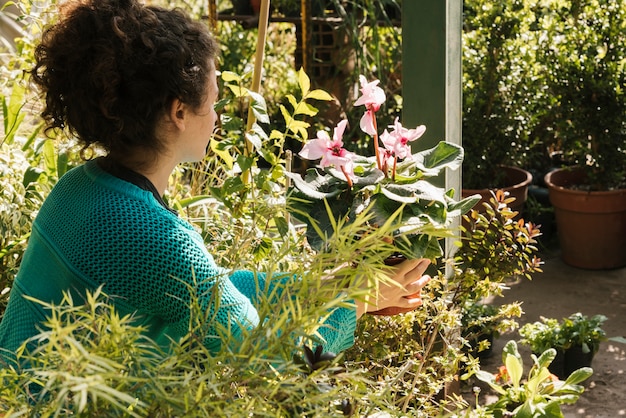
Sustainable gardening is a holistic approach to cultivating food that integrates ecological principles to conserve resources, enhance biodiversity, and promote long-term environmental health for a resilient future.
Embarking on a journey of sustainable gardening: growing your own food and conserving resources offers far more than just fresh produce; it’s a conscious decision to nurture our planet. This practice fosters environmental stewardship, enhances local ecosystems, and provides significant benefits for both the individual and the community. By understanding and implementing sustainable principles, we can transform our backyards into vibrant, productive havens that reflect a commitment to a healthier, more resilient world.
The foundational principles of sustainable gardening
Sustainable gardening isn’t merely about planting seeds; it’s a philosophy built on ecological harmony and resource efficiency. At its core, it seeks to mimic natural ecosystems, creating a balanced environment where plants thrive with minimal external intervention. This includes practices that reduce waste, conserve water, and enrich soil naturally.
One of the primary tenets is soil health. Healthy soil is the bedrock of any thriving garden, reducing the need for synthetic fertilizers and pesticides. By focusing on organic matter and microbial life, gardeners can create a self-sustaining system that nourishes plants naturally. This approach shifts away from conventional methods that often deplete soil nutrients and contribute to environmental degradation.
Prioritizing soil health
Building rich, living soil is paramount in sustainable gardening. This involves incorporating organic materials and fostering a vibrant microbial community. Composting, for instance, transforms kitchen and yard waste into nutrient-dense soil amendments, closing the loop on organic materials.
- Composting kitchen and yard waste
- Using cover crops to prevent erosion and add nutrients
- Practicing no-till or minimal tillage to preserve soil structure
Beyond composting, the wise use of mulch also plays a crucial role. Mulch conserves soil moisture, suppresses weeds, and gradually breaks down to enrich the soil, creating a thriving environment for plant roots and beneficial organisms.
Water conservation strategies
Water is a finite resource, and sustainable gardening emphasizes its judicious use. Techniques like rainwater harvesting, drip irrigation, and selecting drought-tolerant plants significantly reduce water consumption. These methods ensure that plants receive adequate hydration without wasteful runoff.
Understanding a plant’s water needs and the local climate can inform efficient irrigation schedules. Instead of frequent, shallow watering, a deeper, less frequent approach encourages roots to grow deeper, making plants more resilient to dry spells. This intelligent watering also minimizes fungal diseases that thrive in constantly damp conditions.
Another effective strategy is the creation of rain gardens or bioswales. These landscape features are designed to capture and filter stormwater runoff, allowing it to slowly infiltrate the ground rather than overwhelming storm drains. This not only conserves water but also helps to recharge local groundwater supplies.
Ultimately, by integrating these core principles, sustainable gardening becomes a powerful tool for environmental conservation, fostering healthy ecosystems and providing bountiful harvests.
Choosing the right plants for your sustainable garden
The success of a sustainable garden largely hinges on selecting appropriate plant species. This decision impacts water usage, pest resistance, and overall ecosystem health. Native plants, heirloom varieties, and companion planting are all key considerations.
Native plants are intrinsically adapted to the local climate, soil conditions, and rainfall patterns. They require less water, fewer fertilizers, and are naturally resistant to many common pests and diseases prevalent in their region. By choosing native species, gardeners support local wildlife, including pollinators and beneficial insects, which are crucial for a balanced ecosystem.
Embracing native and heirloom varieties
Heirloom seeds represent open-pollinated plant varieties that have been passed down through generations. Unlike hybrid seeds, heirloom seeds produce plants that are true to type, meaning gardeners can save seeds from their harvest for future planting. This practice fosters biodiversity and reduces reliance on commercial seed suppliers.
- Reduced water and nutrient needs due to natural adaptation
- Support for local wildlife and pollinator populations
- Genetic diversity for resilience against disease and pests
Heirloom varieties often possess unique flavors, textures, and appearances that commercial varieties lack. Their resilience and ability to thrive in various conditions make them ideal for sustainable gardening, allowing gardeners to preserve genetic diversity and secure a stable food supply. They contribute to a more robust food system, less susceptible to widespread crop failures.
The art of companion planting
Companion planting involves placing different plant species near each other to foster mutual benefits. This natural synergy can deter pests, attract beneficial insects, improve nutrient uptake, and enhance plant growth. For instance, planting marigolds near vegetables can repel nematodes, while basil can enhance the flavor of tomatoes.
Another classic example is the “Three Sisters” planting method, a traditional Native American practice. Corn, beans, and squash are planted together; the corn provides a stalk for the beans to climb, the beans fix nitrogen in the soil for the corn and squash, and the squash leaves shade the soil, reducing weeds and conserving moisture. Such symbiotic relationships reduce the need for artificial interventions.
This method also creates a more diverse and resilient garden ecosystem, making it less vulnerable to widespread pest infestations or diseases. Understanding these plant interactions is a step towards a more natural and productive gardening approach, minimizing the need for chemical inputs and supporting a healthy garden environment.
Pest and disease management without harmful chemicals
One of the cornerstones of sustainable gardening is managing pests and diseases naturally, without resorting to synthetic pesticides or herbicides. These chemicals not only harm beneficial insects and soil microbes but also pose risks to human health and the environment.
Instead, sustainable gardeners employ a variety of non-toxic strategies that work with nature to maintain balance. This holistic approach supports a healthy garden ecosystem, where natural predators keep pest populations in check and plants are robust enough to resist disease.
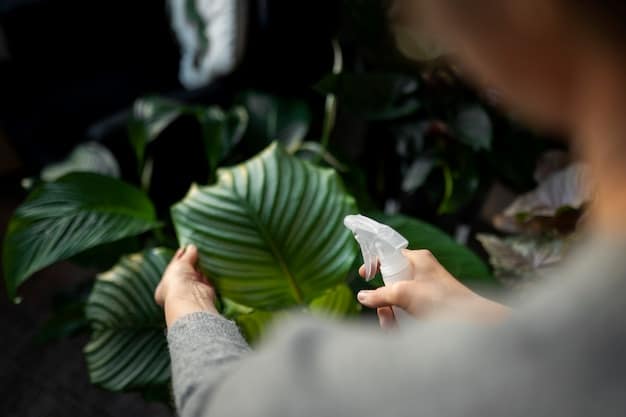
Integrated pest management (IPM) techniques
Integrated Pest Management (IPM) is a comprehensive approach that prioritizes prevention, monitoring, and non-chemical interventions. It starts with creating a healthy environment where pests are less likely to become a problem. This involves selecting resistant plant varieties and ensuring good air circulation.
- Regular garden inspections to detect issues early
- Manual removal of pests like slugs and caterpillars
- Introducing beneficial insects, such as ladybugs for aphid control
If pest issues arise, IPM moves through a hierarchy of interventions, starting with the least intrusive. This might include hand-picking pests, using physical barriers like row covers, or applying organic pest control substances like neem oil or insecticidal soap, which have minimal environmental impact. The goal is to resolve the problem with the most targeted and least harmful method possible.
Building natural resilience in plants
A healthy, vigorous plant is naturally more resistant to pests and diseases. By focusing on fundamental gardening practices, sustainable gardeners can bolster their plants’ natural defenses. This includes ensuring optimal soil health, proper watering, and adequate sunlight.
Proper plant spacing plays a vital role in preventing the spread of diseases by allowing good air circulation, which reduces humidity and fungal growth. Additionally, avoiding over-fertilization, especially with nitrogen, can prevent lush, soft growth that is more appealing to certain pests. These proactive measures create a robust garden ecosystem capable of defending itself.
Crop rotation is another crucial technique that prevents the buildup of soil-borne diseases and pests specific to certain plant families. By rotating crops, gardeners break the life cycles of pests and pathogens, reducing their populations over time and maintaining soil fertility. This practice contributes significantly to a resilient and disease-resistant garden.
Water conservation: Smart irrigation and rainwater harvesting
Effective water management is critical for sustainable gardening, especially in regions facing water scarcity. Minimizing water waste not only conserves a precious resource but also reduces utility costs and the energy associated with water delivery. Sustainable practices focus on targeted application and maximizing natural water sources.
Traditional watering methods often lead to significant waste through evaporation, runoff, and overwatering. Sustainable gardeners adopt smarter techniques that deliver water directly to plant roots, ensuring maximum absorption and minimal loss. These methods reflect a deep understanding of hydrological cycles and plant needs.
Implementing efficient irrigation systems
Drip irrigation and soaker hoses are prime examples of efficient watering systems. These systems deliver water slowly and directly to the plant’s root zone, virtually eliminating evaporation and runoff. They provide a consistent supply of moisture, promoting healthy root development.
- Drip irrigation for precise water delivery
- Soaker hoses for gradual, uniform watering
- Using automated timers to optimize watering schedules
Beyond these systems, understanding soil moisture levels through probes or simply by touch can prevent overwatering. Watering deeply and infrequently encourages plants to develop extensive root systems, making them more resilient during dry periods. This also supports a healthier soil microbiome, which is essential for nutrient uptake and plant vitality.
Harnessing the power of rainwater
Rainwater harvesting is an ancient yet increasingly relevant practice for sustainable gardens. Collecting rainwater from rooftops or other surfaces provides a free, chlorine-free water source that is ideal for plants. Rain barrels and larger cisterns can store significant amounts of water for dry spells.
The collected rainwater can be used to irrigate garden beds, water potted plants, or even flush toilets in some advanced systems. This reduces reliance on municipal water supplies, especially during peak demand, and can significantly lower water bills. Furthermore, it lessens the burden on local stormwater infrastructure by reducing runoff.
Beyond simple collection, designing landscapes that capture and infiltrate rainwater, such as rain gardens or swales, further enhances water conservation. These features divert runoff from paved surfaces into planted depressions, allowing water to slowly percolate into the soil, recharging groundwater naturally. This integrated approach benefits both the garden and the broader ecosystem.
Composting and natural fertilization: Closing the loop
Composting is arguably the cornerstone of sustainable gardening, transforming organic waste into a rich, nutrient-dense soil amendment. This process diverts materials from landfills, reduces greenhouse gas emissions, and creates a valuable resource for feeding plants naturally. It’s a prime example of a circular economy in action within the garden.
Beyond composting, sustainable gardeners utilize other natural fertilization methods that enhance soil fertility and plant health without relying on synthetic chemicals. These practices nurture the soil ecosystem, leading to robust plant growth and healthier produce.
The benefits of composting for soil enrichment
Compost acts as a natural slow-release fertilizer, steadily providing essential nutrients to plants over time. It improves soil structure, enhances water retention in sandy soils, and improves drainage in heavy clay soils. The rich microbial life in compost also helps plants access nutrients more efficiently.
- Adds essential nutrients to the soil naturally
- Improves soil structure and water retention
- Increases beneficial microbial activity
Composting transforms diverse organic materials—from kitchen scraps to yard trimmings—into a stable, humus-rich substance. This not only reduces waste but also creates a product superior to many synthetic fertilizers, as it feeds the soil food web, not just the plants. A healthy soil food web is key to nutrient cycling and disease suppression.
Green manures and cover crops
Green manures and cover crops are plants grown specifically to benefit the soil, rather than for harvest. They are typically tilled into the soil while still green, adding organic matter and nutrients. This practice prevents soil erosion, suppresses weeds, and improves soil structure and fertility.
Legumes like clover and vetch are popular cover crops because they fix atmospheric nitrogen into the soil, making it available to subsequent crops. Non-legumes such as rye and buckwheat add significant organic matter and can scavenge leftover nutrients, preventing them from leaching away. This technique is particularly valuable in vegetable beds that lie fallow during off-seasons.
By incorporating these plants into the garden rotation, gardeners can naturally replenish soil nutrients, reduce the need for external inputs, and promote a vibrant, healthy ecosystem beneath the surface. This proactive approach to soil stewardship ensures long-term garden productivity and resilience.
Biodiversity in the garden: Attracting beneficial wildlife
A truly sustainable garden is a miniature ecosystem, fostering a rich diversity of life beyond just cultivated plants. Attracting beneficial insects, birds, and other small creatures creates a balanced environment where natural processes help with pest control, pollination, and nutrient cycling. This approach moves beyond monoculture towards intertwined biological communities.
Creating habitats and providing food sources for wildlife transforms a garden into a living tapestry, full of activity and vitality. When a garden teems with diverse life, it becomes more resilient to ecological disturbances, requiring fewer human interventions.
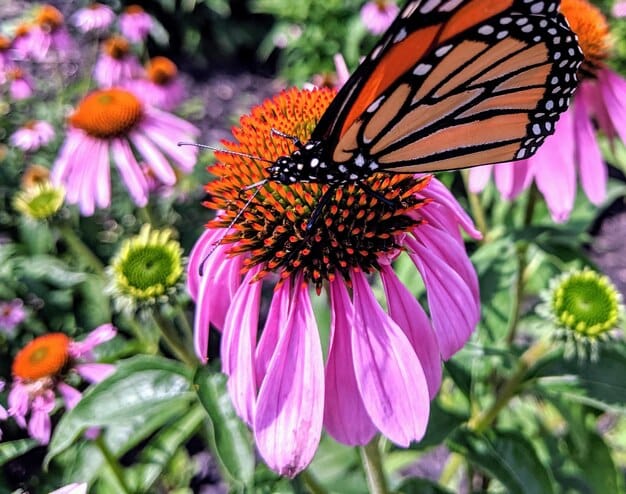
Creating habitats for pollinators and predators
Pollinators, such as bees, butterflies, and hummingbirds, are essential for the production of most fruits and vegetables. Providing them with a continuous supply of nectar and pollen through diverse flowering plants is crucial. Opt for native flowering plants, as they are often best suited to local pollinators.
- Planting a variety of native flowering plants
- Providing diverse nesting sites for beneficial insects (e.g., bug hotels)
- Avoiding wide-spectrum pesticides that harm beneficial insects
Equally important are beneficial predatory insects like ladybugs, lacewings, and hoverflies, which prey on common garden pests. Attracting these “good bugs” by planting their preferred flowering plants (often those with small, open flowers like dill and parsley) can significantly reduce pest populations naturally. This biological control mechanism lessens the reliance on chemical treatments.
Integrating wildlife-friendly features
Beyond planting, adding specific features to the garden can further enhance its appeal to wildlife. A small water source, such as a bird bath or a shallow pond, provides drinking and bathing opportunities for birds and beneficial insects, especially during dry periods. Ensure the water is clean and shallow enough for small creatures.
Providing shelter is another key element. This could include leaving a small pile of logs or branches for insects, snakes, or toads, or planting dense shrubs that offer nesting sites for birds. Creating a less “tidy” area in a corner of the garden can also provide invaluable habitat for creatures that prefer undisturbed spaces. Such undisturbed areas mimic natural environments and support a wider array of species.
By intentionally designing for biodiversity, sustainable gardeners cultivate a landscape that is self-regulating, resilient, and teeming with life, where every creature plays a role in the garden’s overall health and productivity. The result is a vibrant, dynamic space that provides food for humans and habitat for nature.
Challenges and commitment in sustainable gardening
While sustainable gardening offers numerous benefits, it’s not without its challenges. The journey requires commitment, adaptation, and a willingness to learn from nature. Success often means shifting perspective from immediate control to long-term ecological balance.
Initial efforts might seem daunting, especially for those accustomed to conventional gardening methods. However, the long-term rewards—healthier produce, a vibrant ecosystem, and reduced environmental impact—far outweigh the initial hurdles. Patience and observation are key virtues in this practice.
Overcoming initial hurdles and learning curves
Transitioning to sustainable practices might involve a learning curve. Understanding soil biology, identifying beneficial insects, and mastering water conservation techniques take time and effort. Some common challenges include managing initial pest outbreaks without chemicals or dealing with nutrient deficiencies in new organic beds.
- Patience with natural processes and slower results
- Continuous learning about local ecology and plant needs
- Embracing trial and error as part of the learning process
Gardeners may also need to adjust their expectations regarding aesthetics; a truly sustainable garden often looks different from a meticulously manicured lawn. There might be “weeds” (which could be beneficial native plants) or visible insect activity, signaling a healthy, functioning ecosystem rather than a problem. This shift in mindset is crucial for long-term commitment and enjoyment.
Long-term commitment for a greener future
Sustainable gardening is not a one-time project but an ongoing commitment to nurturing the earth. It requires consistent effort in composting, monitoring plant health, and adapting to changing environmental conditions. This long-term perspective contributes to building truly resilient ecological systems.
The commitment extends beyond one’s own garden, inspiring community engagement and knowledge sharing. By demonstrating successful sustainable practices, gardeners can encourage others to adopt similar approaches, creating a ripple effect of environmental stewardship. This collective effort is essential for addressing broader ecological challenges.
Ultimately, sustainable gardening embodies a lifestyle choice that prioritizes ecological well-being and resourcefulness. It’s an investment in a healthier personal environment and a positive contribution to planetary health, ensuring that food production can continue sustainably for generations to come. This enduring dedication fosters both individual and collective resilience, reinforcing our connection to the living world.
| Key Practice | Brief Description |
|---|---|
| 🌱 Soil Health | Focus on composting and organic amendments to enrich soil naturally, minimizing chemical inputs. |
| 💧 Water Conservation | Implement drip irrigation, rainwater harvesting, and drought-tolerant plants to save water. |
| 🐞 Natural Pest Control | Utilize companion planting, beneficial insects, and manual removal to manage pests without chemicals. |
| 🦋 Biodiversity | Attract pollinators and beneficial wildlife by planting native species and providing diverse habitats. |
Frequently asked questions about sustainable gardening
The primary goal of sustainable gardening is to cultivate healthy food while minimizing environmental impact and conserving natural resources. It focuses on creating a balanced ecosystem that thrives without excessive external inputs, promoting long-term ecological health and resilience.
Sustainable gardening conserves water through various methods, including drip irrigation, implementing rainwater harvesting systems like rain barrels, and selecting drought-tolerant native plants. These practices ensure water is used efficiently and reduce reliance on municipal water sources, minimizing waste and runoff.
Soil health is crucial because it forms the foundation of a thriving garden ecosystem. Healthy, organically rich soil provides essential nutrients to plants, supports beneficial microbial communities, and improves water retention and drainage. This reduces the need for synthetic fertilizers and promotes robust plant growth naturally.
Yes, sustainable gardening significantly reduces pests naturally by fostering biodiversity. Techniques like companion planting, attracting beneficial insects (predators of common pests), and promoting plant resilience through proper care create a balanced ecosystem where pest populations are kept in check without chemical interventions.
Native plants are integral to sustainable gardens because they are adapted to local conditions, requiring less water, fertilizer, and pest control. They support local biodiversity, providing crucial food and habitat for pollinators and other wildlife, which in turn contributes to a more resilient and self-sustaining garden ecosystem.
Conclusion
Engaging in sustainable gardening is more than a hobby; it is a vital practice that intertwines food production with environmental stewardship. By consciously adapting our gardening methods, from nurturing soil to conserving water and fostering biodiversity, we contribute to a healthier planet and secure a more resilient food future. The journey of transforming a garden into a sustainable haven is a continuous learning process, offering profound benefits for both the individual and the broader ecological community. This commitment to thoughtful cultivation ensures that our gardens flourish not just for today, but for generations to come, embodying a holistic respect for nature’s intricate balance.
